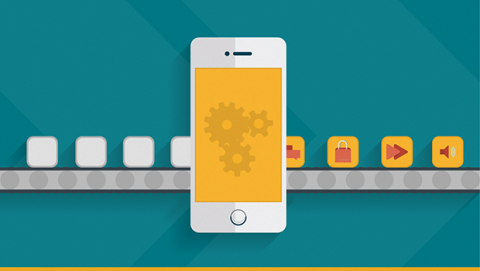When you think of legacy technology – the aging systems holding organizations back in an increasingly digital age – it's easy to assume that it's a problem primarily facing large, established enterprises. The recent Delta outage is an example of the type of incident that can occur when you are dealing with IT systems that date back to the 1990s.
But the reality today is that all organizations are operating in an exponential era. According to Dr. David Bray, senior executive and CIO of the U.S. Federal Communications Commission, that exponential change means even a startup can be plagued by legacy technology in a period of four to five years if they aren't diligent in following a model of continuous improvement.
“In 2013, there was the same number of network devices on the face of the planet that there were humans,” Bray said. “7.1 billion human beings on the face of the planet, and 7.1 billion network devices. Less than two years later, it doubled to 14 billion network devices, and by 2020, it's estimated there will be more than 50 billion. That’s not linear change. That’s exponential change”
Rethinking outdated processes
So how can CIOs and other digital C-Suite leaders ride this wave of exponential change? First, Bray says, they have to break free from what he calls the operations maintenance model.
“This spring, we released a new electronic comment filing system at the FCC; however, the previous incarnation was 18 years old. I want to ensure we never get to a state where it’s another 18 years before we update it again,” said Bray.
He explained, “In the past, a team would develop a new solution and then hand it off to operations to maintain. I think that is still the model for a lot of IT organizations – a development team for new solutions and an operations team to maintain them. Yet when you are stuck in this model, you often revisit the solution in five years only to realize it's woefully out of date. The old ‘revisit every five years or longer’ model will require a massive reinvestment every five years, which takes a lot of energy and coordination. Quite frankly, in five years, you might have lost the institutional knowledge that was present when you created it in the first place.”
Bray argues that this model isn't going to work for organizations as technology change continues to accelerate, and he has worked to shift the mindset of IT at the FCC toward a continuous improvement model. He says that the recent website relaunch is a great example of this mindset at work.
“We didn't just release the website and then call it a day and move on to something else. Improvement is ongoing based on stakeholder feedback and experience. We’re still working to make additional adjustments, we're staying aware of additional functionality, and we're learning as we see how various users engage with the site,” Bray says. “This is how we try to approach everything in this new era in which the borders between mission and IT dissolving. Continuous improvement becomes the requirement for the entire organization – and IT is no longer an afterthought, it is a key part of accomplishing the mission or business of any organization.”
New models for the digital age
Bray says there are a couple things CIOs can do to adopt a model of continuous improvement throughout their organizations.
“DevOps is a good paradigm to shorten the disconnects between developers and operations. Going forward, if you separate your developers from your operations, you probably are going to fall behind,” Bray says.
However, he says, DevOps doesn’t mean that you just bring teams together in one room and expect that your work is done. Bray says, “it’s much more about recognizing that you are never really 'done' with a project. You need both a program manager who’s watching how the product is performing for the overarching mission of an organization, and a fairly simple process in place with the developers to continuously update the product based on how it’s being used by different stakeholders, feedback received, and system performance.”
This goes hand-in-hand with the FCC IT organization's commitment to always be in listening mode.
“We are always scanning the horizon for additional requests from our stakeholders,” says Bray, “With the way cloud-based technologies are changing today, requests that may not have been possible six months ago are now being incorporated into our pipeline. Moreover, after we release a new solution, we never stop looking for opportunities to make things either more agile or resilient with the latest cloud solutions. We always want to be in proactive ‘creative problem-solver’ mode.”
What drives this commitment is a focus on the stakeholder experience, first and foremost, Bray says.
“Putting the stakeholder first means looking at the challenges that we all face as individuals every day. There is ever-increasing competition for your attention, so if your stakeholder experience is prolonged, or doesn't offer adequate value for the time people put into it, you are going to fail as an enterprise. Similarly, if the stakeholder experience is fragmented, that, too, will hurt you in the long run. Thinking about things from a stakeholder experience perspective is critical for digital C-Suite leaders operating in a continuous improvement model.”
Finally, Bray says that this approach can help humanize IT and develop closer working relationships.
“We are quick to recognize that if this was easy, it probably would have been automated – and still might be one day. However, as it stands right now, a lot of digital experiences still have to involve a combination of human and technology to achieve success. So if you embrace that humanness and say, 'If you spot a bug or if you want to suggest an improvement, we’ll get on it; we’ll figure out what to do,' this actually creates a better, closer relationship between your stakeholders and the team delivering the services to them.”






Comments
Great post and this all sounds like ITIL. With it you also have processes to manage your continous service improvement.
dr.bray is a great public speaker on exponential change. i have seen him speak and he knows how to convey the sheer size and scope of the changes we're experiencing as a world and how we can best address them. we need more people like him as leaders.